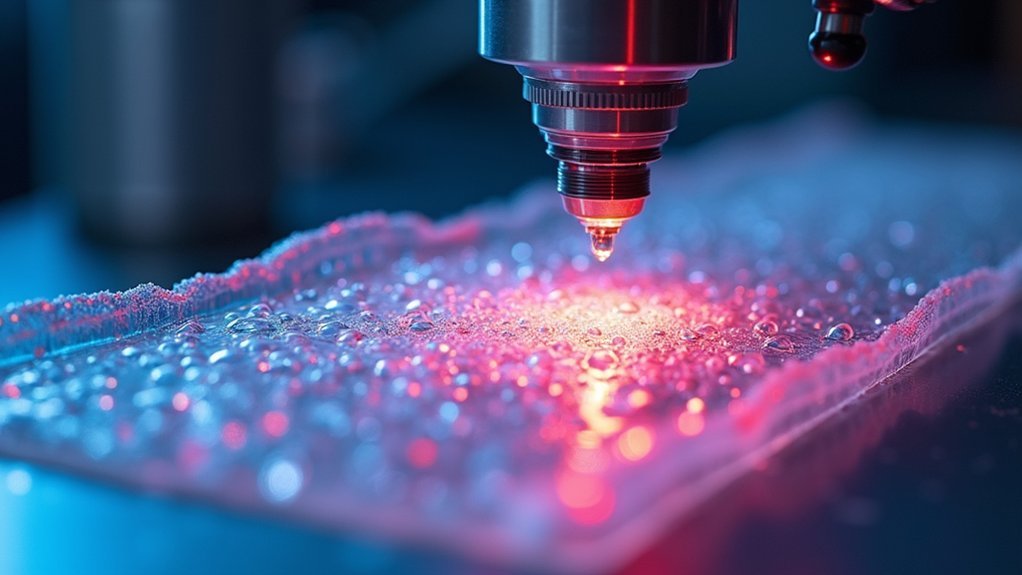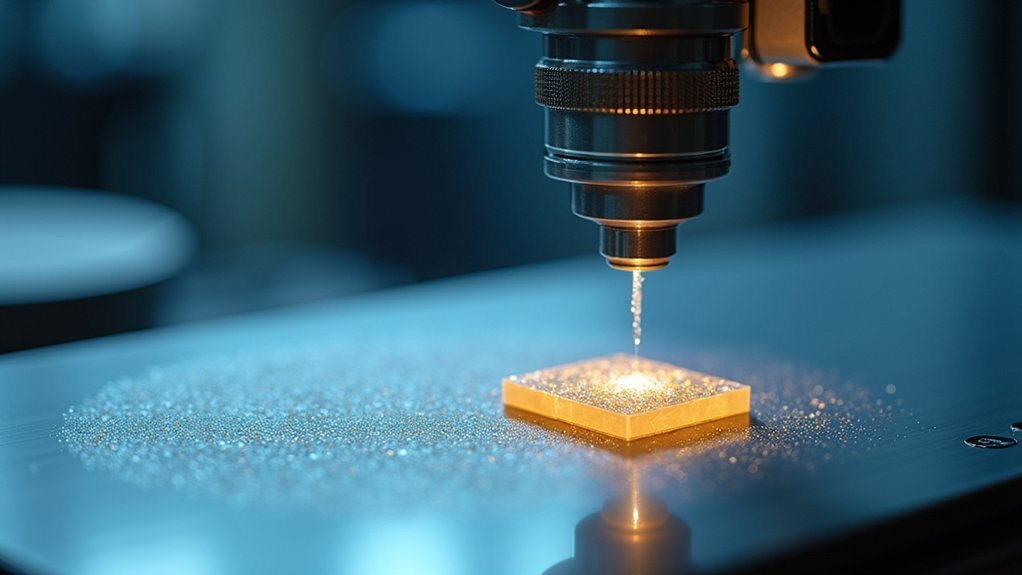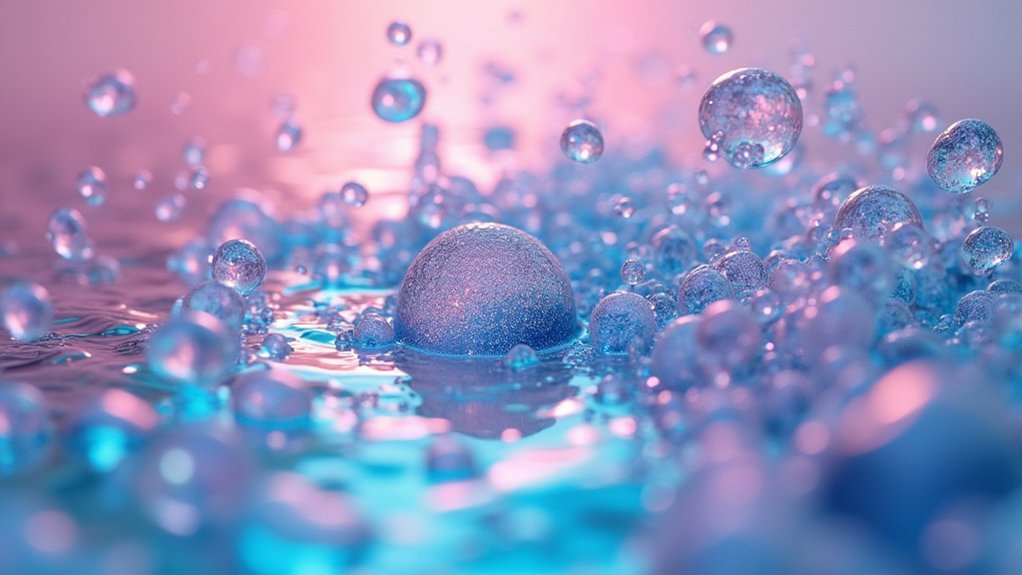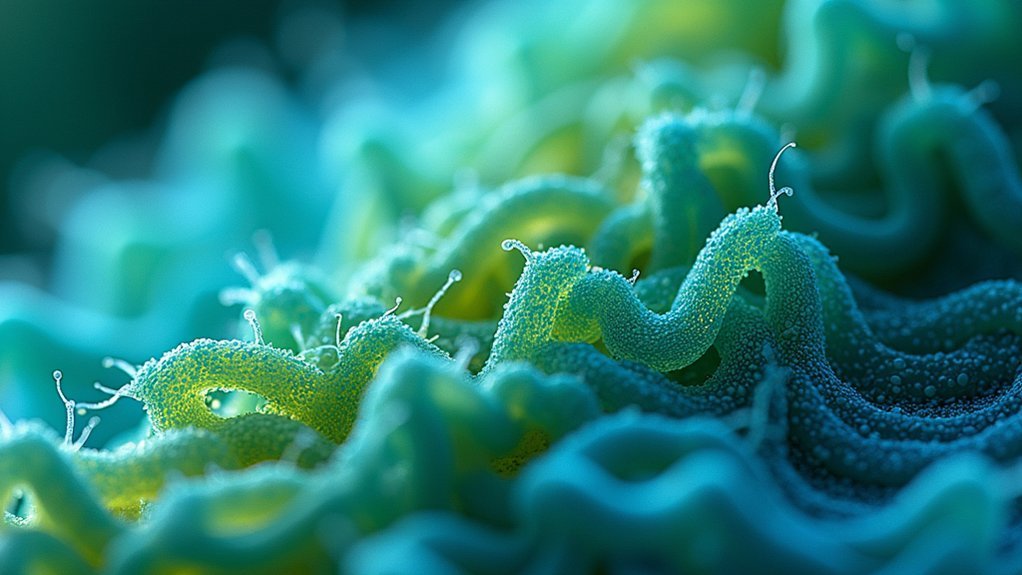Samples move during imaging experiments because of mechanical vibrations from equipment or foot traffic, thermal fluctuations causing material expansion, and inadequate sample securing. In live-cell imaging, cellular motility and fluid dynamics create additional movement, while refractive index changes alter focus perception. You’ll also face focus drift as temperature changes affect optical components. Understanding these factors will help you implement effective strategies to maintain sample stability and capture high-quality, reliable images.
Numeric List of Second-Level Headings

Five key factors contribute to sample movement during imaging experiments. When planning your imaging sessions, you’ll need to address these issues to maintain stable sample position:
- Mechanical Vibrations – Equipment vibrations disrupt setup stability.
- Thermal Fluctuations – Temperature changes cause materials to expand or contract.
- Live Cell Motility – Natural movement in living samples creates positional shifts.
- Refractive Index Changes – Environmental factors alter focus and perceived position.
- Mounting Technique Issues – Inadequate sample securing leads to displacement.
Understanding these factors helps you anticipate and mitigate movement problems in your imaging experiments.
For live cells especially, you’ll need specialized techniques to maintain proper positioning while allowing for natural cellular processes.
Thermal Fluctuations and Expansion Effects
While often overlooked, thermal fluctuations represent one of the most pervasive challenges in imaging experiments. Your samples and imaging system components expand and contract with even minor temperature changes, causing unexpected movement and misalignment during critical observations.
You’ll notice focus drift occurring as temperature shifts alter the refractive index of the medium surrounding your sample, changing the focal position. As temperatures rise, optical components expand at different rates, disrupting the carefully aligned optical path of your imaging system.
To mitigate these issues, you’ll need to prioritize thermal equilibration before beginning experiments. Regular calibration of your imaging system can help account for material-specific expansion effects.
Maintaining a temperature-controlled environment isn’t just good practice—it’s essential for achieving reliable, reproducible imaging results.
Mechanical Vibration Sources and Mitigation

Even as you focus on thermal stability, mechanical vibrations constantly threaten your imaging experiments with unwanted sample movement.
These vibrations originate from diverse sources—nearby equipment, HVAC systems, and even foot traffic through your lab can disrupt sample stability.
When mechanical vibrations reach your microscope, they cause focus drift and image blur, compromising your data quality and reproducibility.
You’ll notice these effects most in high-resolution live-cell imaging experiments where precision is critical.
To mitigate these issues, invest in anti-vibration tables or isolation mounts for your imaging setup.
Regular calibration of your equipment and proper sample mounting techniques will further reduce movement susceptibility.
For ultimate precision, consider incorporating piezoelectric stages that provide nanometer-level position control, effectively counteracting the vibrations that would otherwise ruin your carefully designed imaging experiment.
Sample Mounting Techniques for Stability
Proper sample mounting represents the foundation of successful imaging experiments, directly determining whether your specimens remain stable or drift during critical observations.
Stable specimens yield reliable data; proper mounting prevents drift that compromises experimental integrity.
When you’re seeking reliable data, how you secure your sample can make or break your results.
- Use specialized chambers like Nunc Lab-Tek coverglass to prevent unwanted movement while maintaining optical clarity.
- Secure samples to rotation stages with screws for controlled reorientation without compromising stability.
- Consider agar as an anchoring medium for biological specimens, especially roots that require natural growth accommodation.
- Regularly check optical alignment and calibration to minimize the effects of sample drift.
Fluid Dynamics in Live-Cell Environments

Fluid dynamics can disrupt your live-cell imaging when perfusion systems create shear forces that push cells out of your field of view.
Temperature gradients within your imaging chamber generate convection currents that subtly shift your sample position, often leading to focus drift over time.
Your actively migrating cells compound these issues by creating their own micro-currents as they move through the medium, affecting neighboring cells and overall sample stability.
Perfusion Forces
When conducting live-cell imaging experiments, you’ll need to carefully consider the impact of perfusion forces on your samples. The fluid dynamics created by media flow can exert shear stress on cells, potentially causing unwanted movement or behavioral changes.
You’ll notice that perfusion forces are particularly problematic when flow rates aren’t properly calibrated for your specific experimental setup.
- Flow rate must be carefully controlled to prevent cell detachment and maintain imaging stability
- Media viscosity variations can notably alter fluid dynamics and sample positioning
- Surface interactions between cells and substrates are easily disrupted by excessive perfusion
- Soft or highly adherent cell types are especially vulnerable to displacement from perfusion forces
Understanding these mechanical forces will help you design more stable imaging conditions, reducing sample movement and improving the reliability of your experimental data.
Temperature-Induced Currents
Temperature-induced currents represent another significant factor in sample movement during imaging experiments.
When you’re conducting live cell imaging, even minor temperature fluctuations can create convection currents in your aqueous media as molecules gain kinetic energy, reducing viscosity and creating density variations.
As your imaging environment approaches the critical 37°C needed for live cells, thermal expansion of sample chamber materials creates localized temperature gradients that displace your carefully positioned specimens.
These currents are particularly problematic in longer imaging sessions where sample stability is paramount for data accuracy.
You’ll achieve better results by implementing precise environmental control systems that regulate both temperature and humidity.
This minimizes unwanted fluid dynamics and guarantees your samples remain stationary throughout the imaging process, preserving the integrity of your experimental observations.
Cellular Migration Effects
Cells actively navigate their microenvironment during live imaging, creating significant positioning challenges that often go unnoticed until your timelapse reveals unexpected drift.
During fluorescent live cell imaging, the fluid dynamics surrounding your samples introduce forces that influence cellular motility in ways you mightn’t anticipate.
- Different cell types respond uniquely to extracellular matrix gradients, causing variable migration patterns.
- Cytoskeletal reorganization drives movement as cells react to fluid flow in their immediate environment.
- Changes in medium viscosity and temperature alter migration rates, compromising positional stability.
- Osmotic pressure fluctuations from hydration variations cause cells to expand or contract, resulting in subtle but measurable displacement.
Understanding these migration effects helps you design more stable imaging conditions and interpret movement artifacts correctly when analyzing your experimental results.
Cellular Motility and Biological Movement

Although often overlooked in imaging experiment preparation, cellular motility represents a significant source of sample movement during microscopy. During live-cell imaging, you’ll observe that cells aren’t static entities—they constantly reshape and reposition themselves through cytoskeletal dynamics involving actin filaments and microtubules.
Your samples move because cells respond to their environment. Rho GTPases and other signaling pathways actively coordinate these movements as cells react to chemical gradients (chemotaxis) or physical cues like substrate stiffness.
Different cell types exhibit distinct movement patterns—amoeboid, mesenchymal, or collective migration—each contributing differently to sample instability.
When planning imaging experiments, remember that these biological movements aren’t technical failures but natural cellular behaviors. Accounting for this inherent motility is essential for obtaining interpretable data and maintaining focus throughout your imaging sessions.
Focus Drift Correction Methodologies
While biological movement presents natural challenges, focus drift compounds imaging difficulties through mechanical and environmental factors. To maintain ideal image quality during live-cell imaging, you’ll need to implement specific correction strategies.
- Autofocus systems provide real-time adjustments that automatically compensate for focus drift, ensuring your samples remain clear throughout extended imaging sessions.
- Piezoelectric stages deliver precise focal control, quickly correcting minor drifts with nanometer-scale accuracy.
- Regular calibration of your imaging equipment keeps optical paths aligned, preventing systematic focus drift during experiments.
- Scheduled manual refocusing at predetermined intervals serves as a simple yet effective approach when automated systems aren’t available.
These methodologies considerably reduce the impact of temperature fluctuations, mechanical vibrations, and sample thickness changes that typically cause focus drift during critical imaging experiments.
Frequently Asked Questions
What Causes a Specimen to Appear and Move as It Does When Viewed With a Light Microscope?
You’ll see specimens move under light microscopes due to mechanical vibrations, thermal fluctuations, living specimens’ motility, focus changes from varying sample thickness, and environmental factors like air currents affecting the optical path.
What Is the Sample Preparation for Confocal Microscopy?
For confocal microscopy, you’ll need to grow seedlings in chambered coverglass, positioning roots between glass and agar while exposing cotyledons. Allow several hours for acclimatization before securely mounting your sample in the rotation stage.
In Summary
You’ll find that sample movement during imaging stems from multiple factors—thermal changes, mechanical vibrations, inadequate mounting, fluid dynamics, biological motion, and focus drift. By understanding these mechanisms and implementing appropriate stabilization techniques, you can dramatically improve your imaging quality. Remember to address both environmental and biological sources of movement, and don’t hesitate to employ computational corrections when physical stabilization isn’t enough.





Leave a Reply